Abstract
Twenty-three pigeons were subjected to a series of procedures in which the key-peck's effects ranged from immediate, differential food reinforcement, through delayed reinforcement, the production of stimulus changes with and without probable secondary reinforcement, the prevention of food presentation (“food-avoidance”), to extinction. Neither primary nor secondary food reinforcement appeared to be essential for the maintenance or acquisition of key pecking. The food-avoidance contingency failed to suppress responding in any subject. Only complete extinction, when pecking produced neither food nor stimulus changes, eliminated all pecking for most subjects. A combination of stimulus-change reinforcement and food reinforcement appeared to account for the results, but only if it could be assumed that the presence of food in a procedure enhanced the reinforcing power of stimulus change, whether or not the food was also dependent upon responding. Such an interaction between reinforcers may be involved in the phenomenon of autoshaping.
Full text
PDF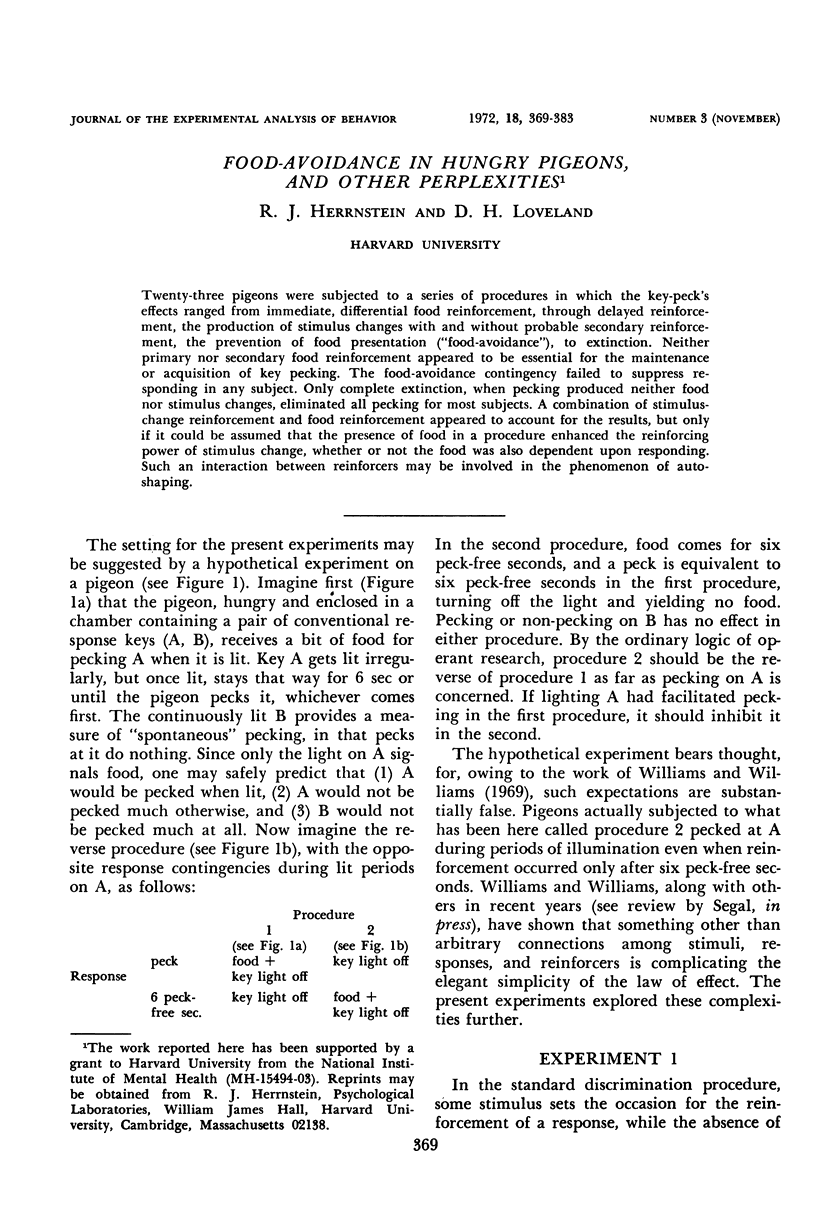
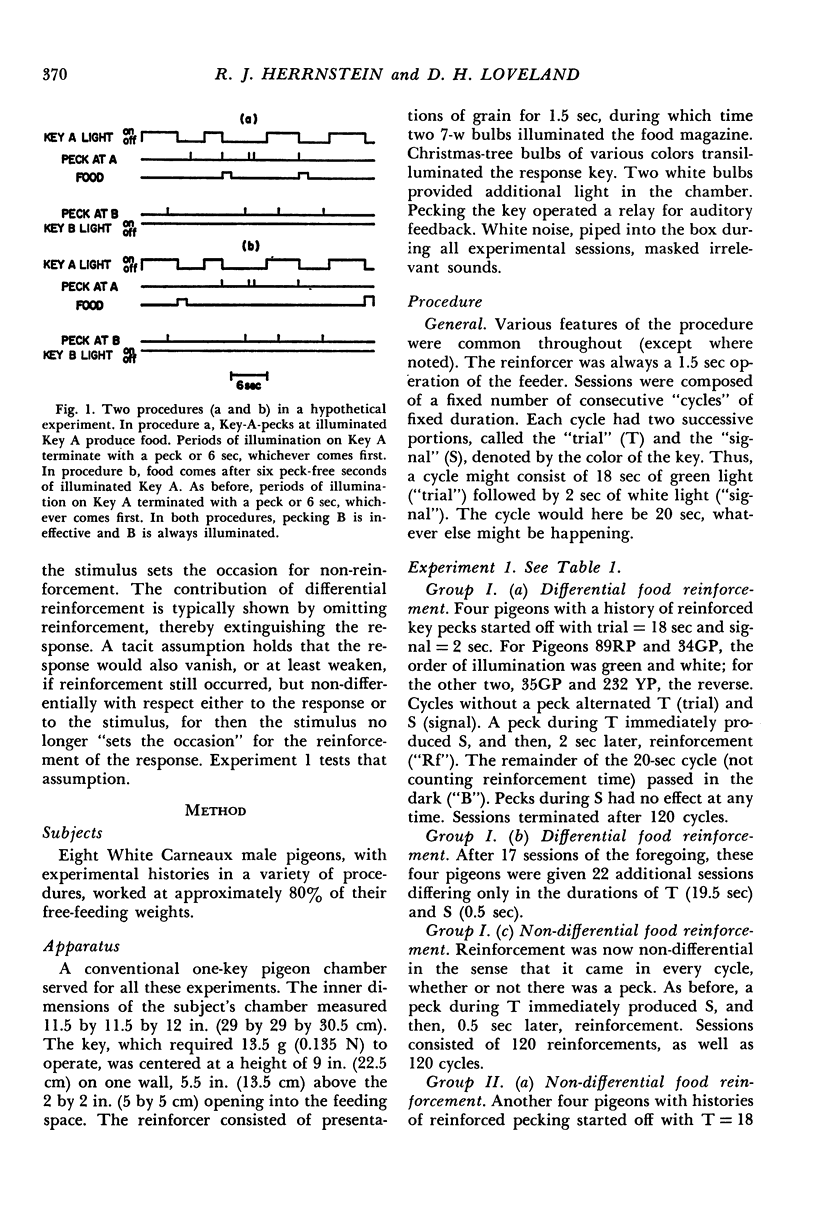
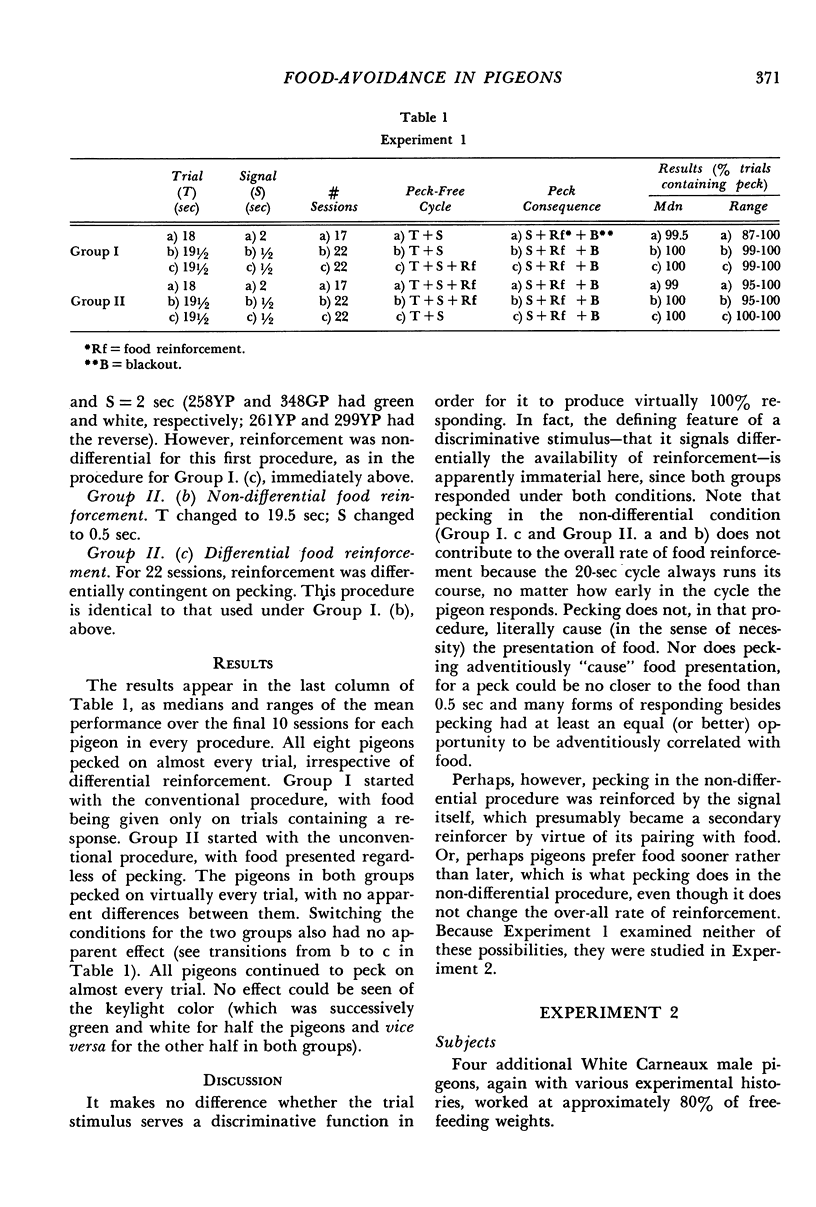
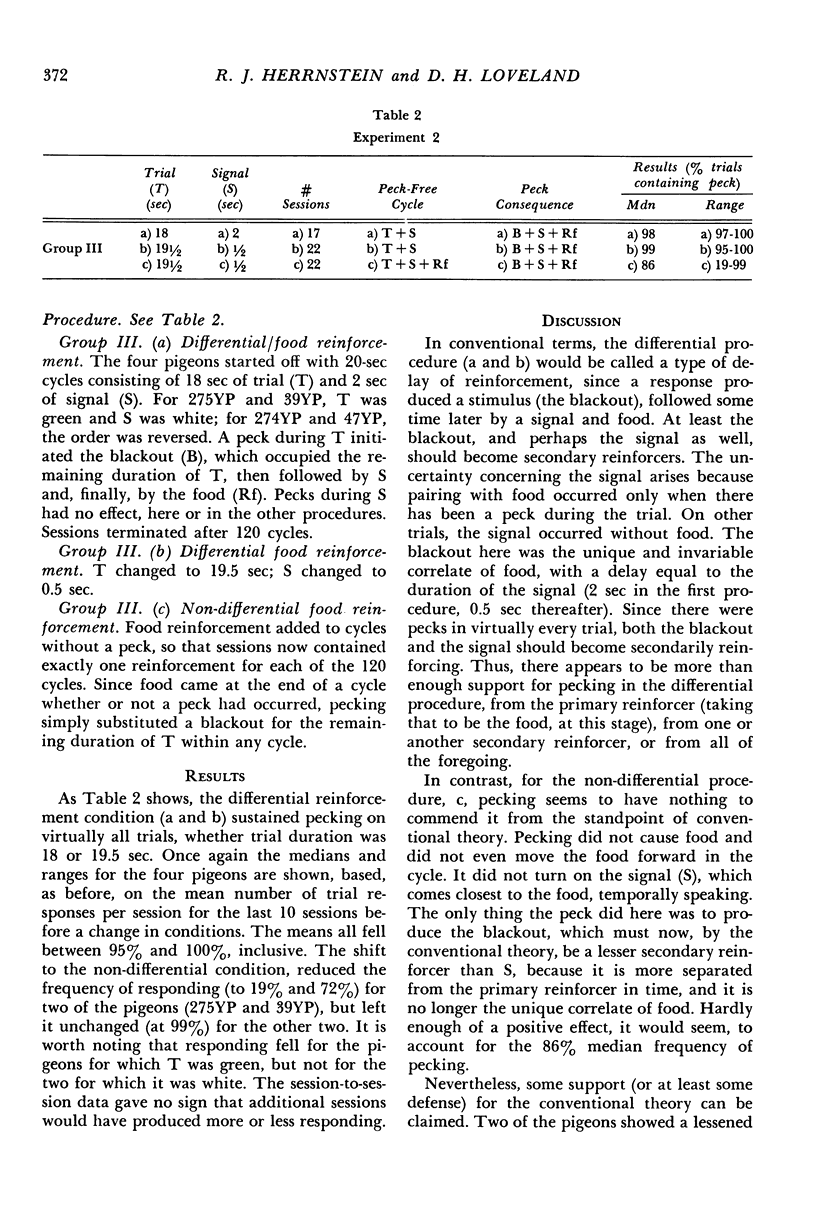
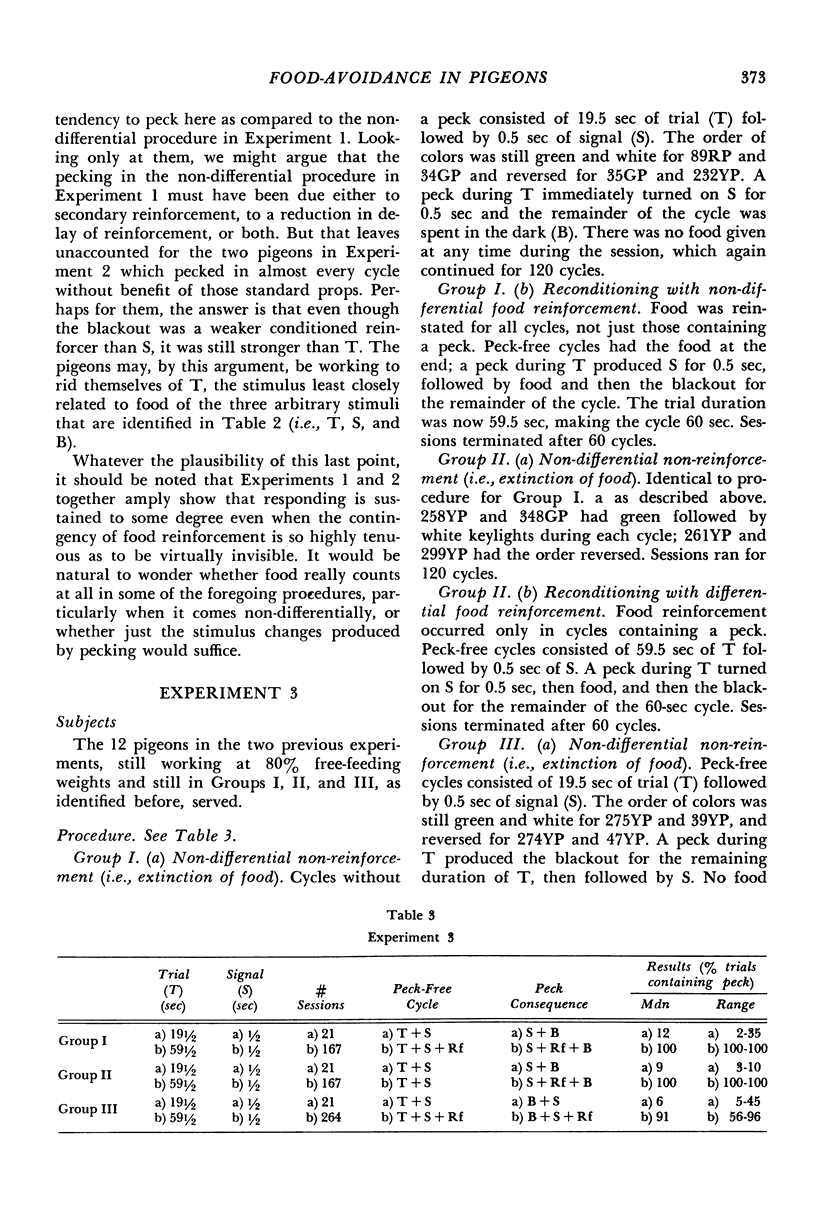
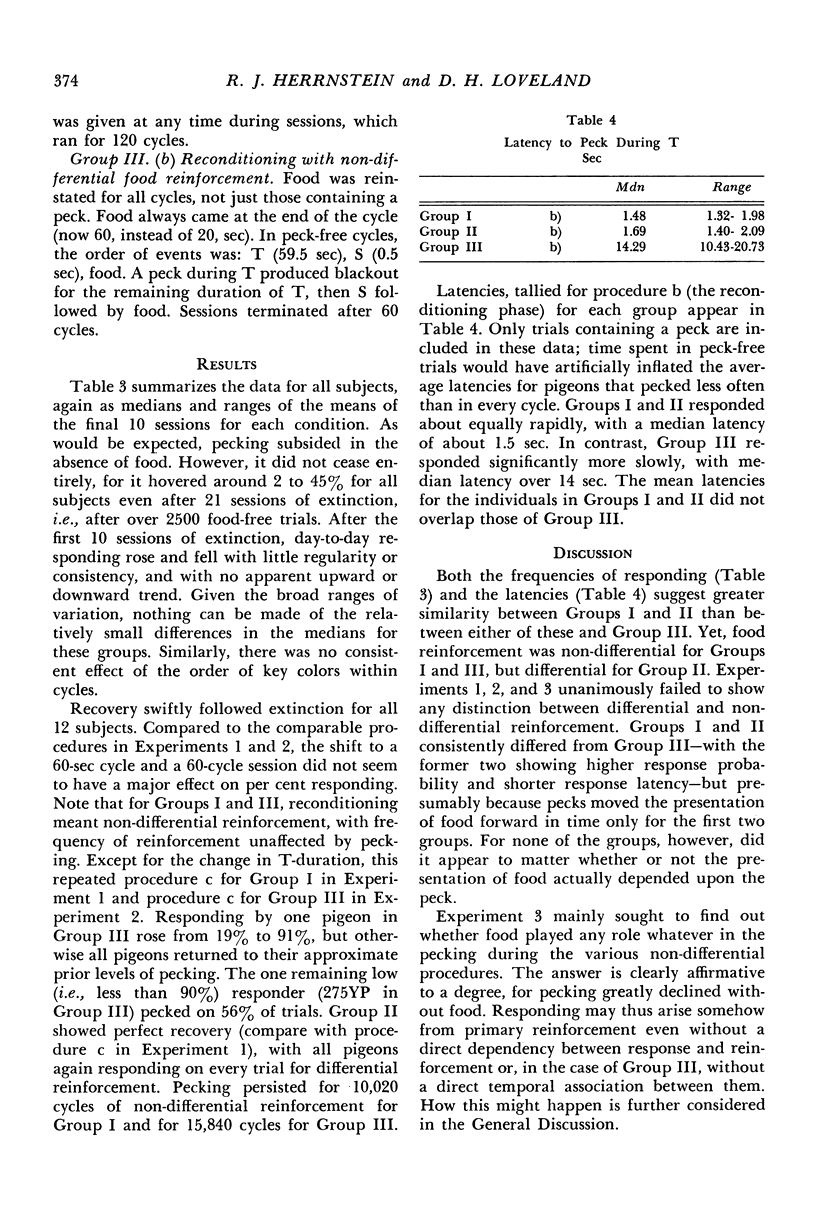
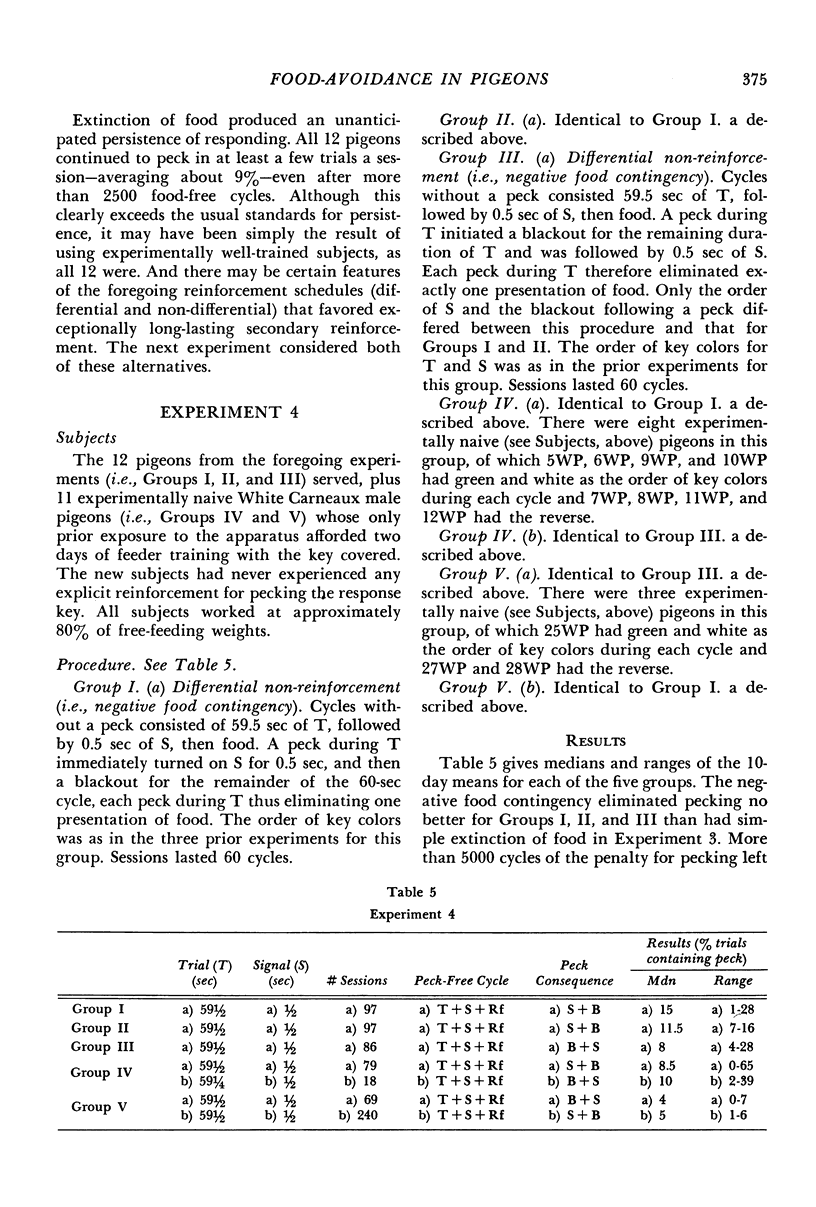
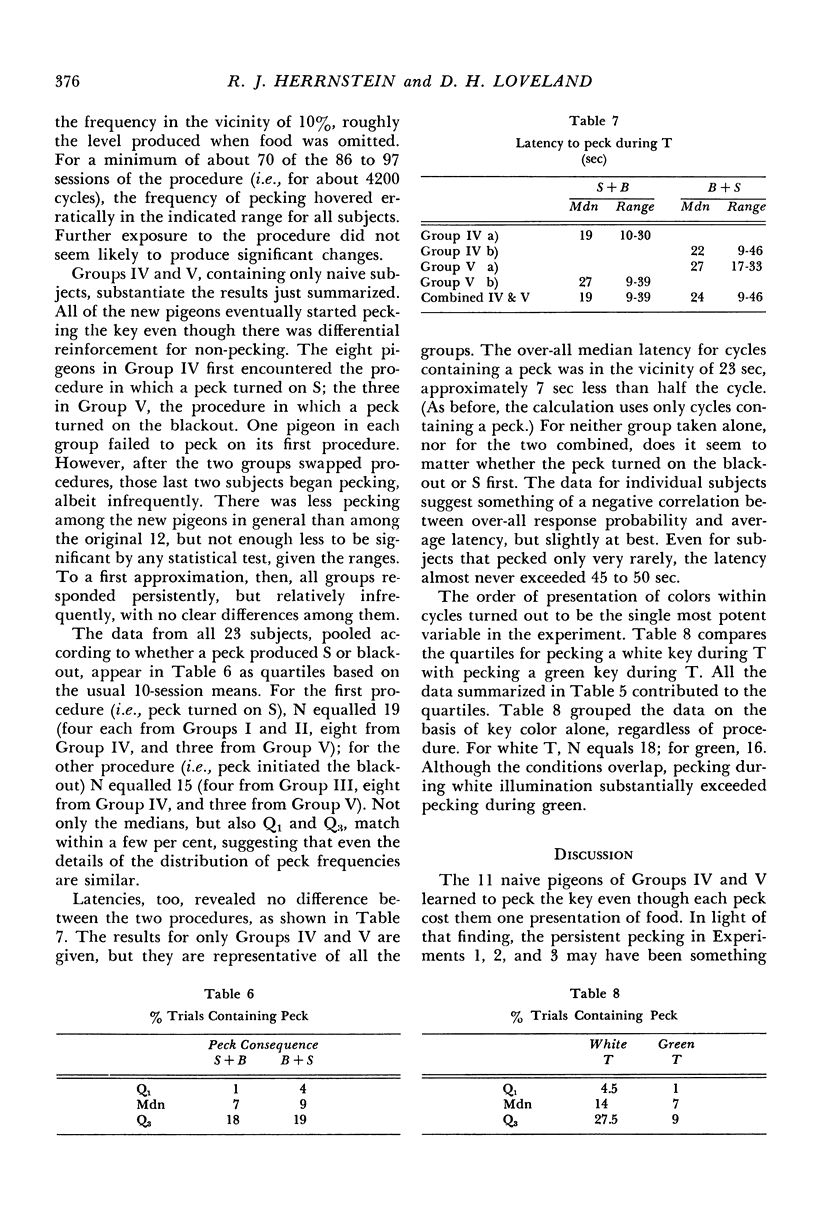
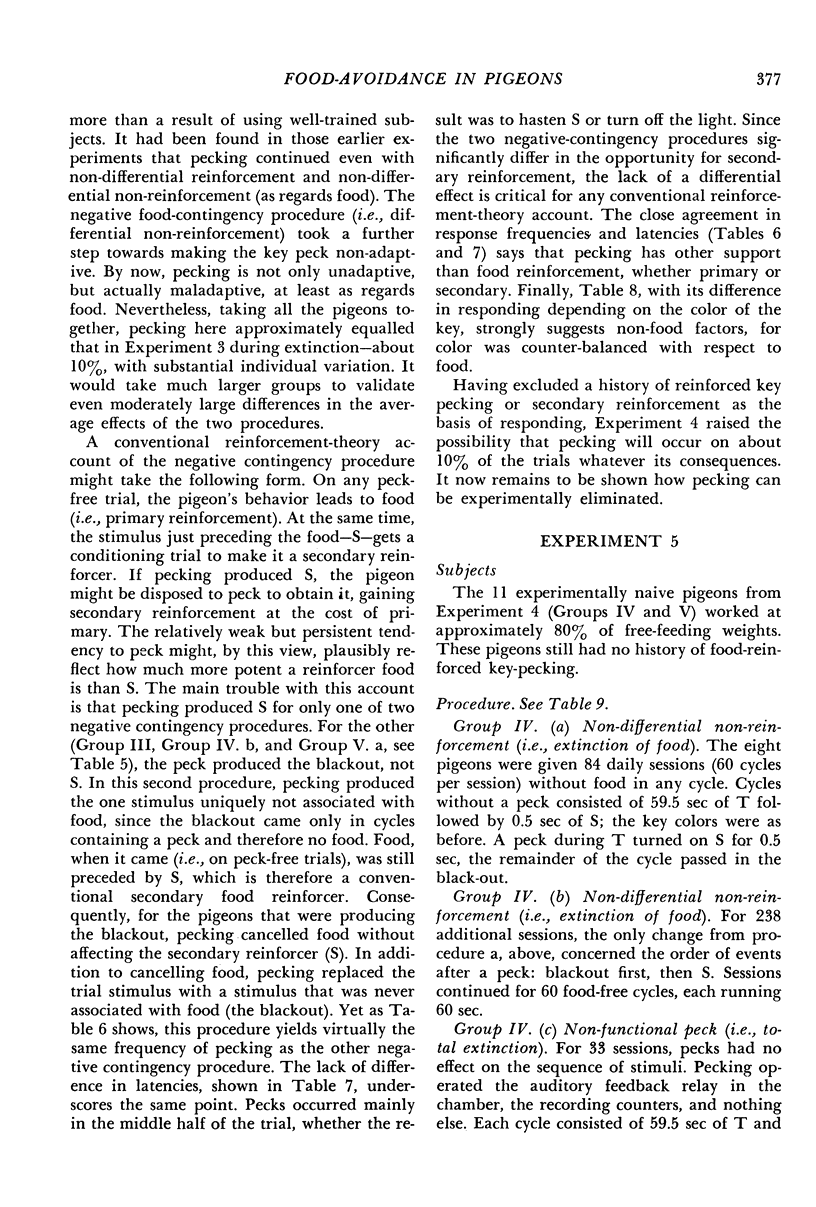
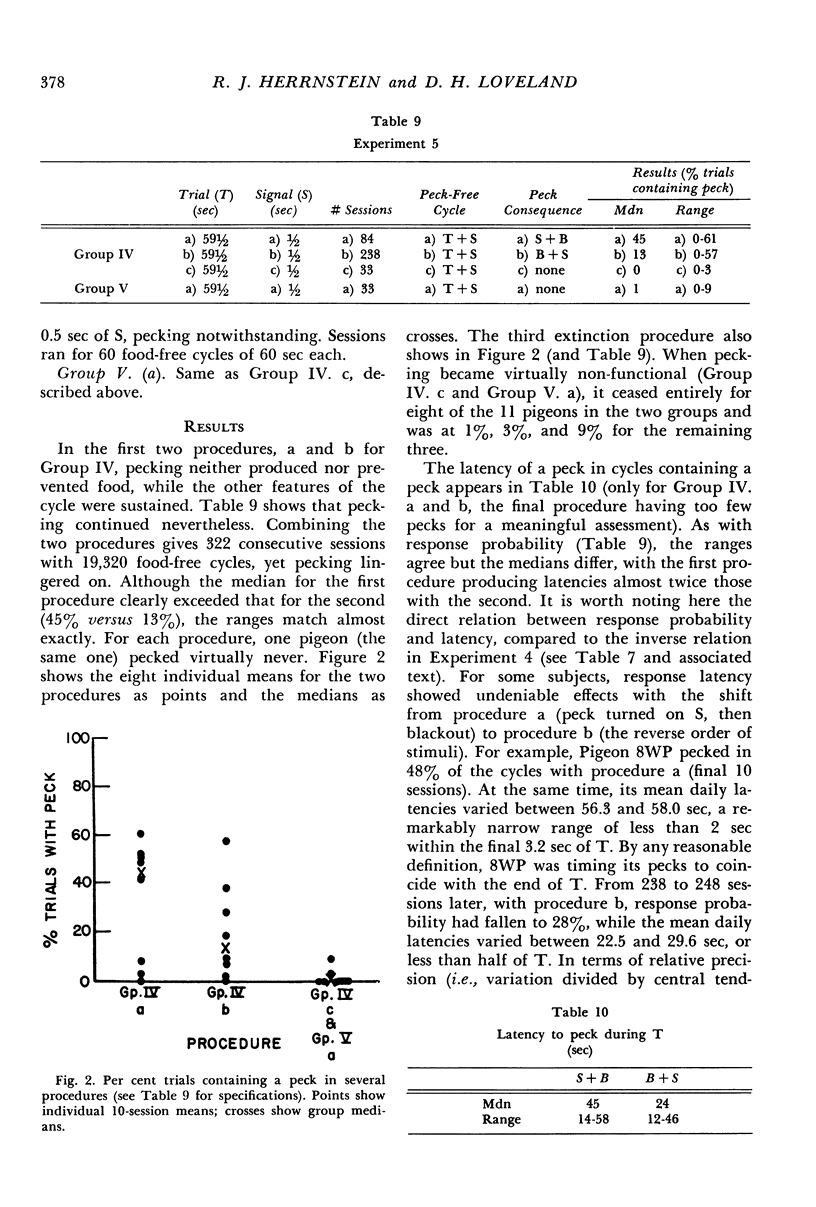
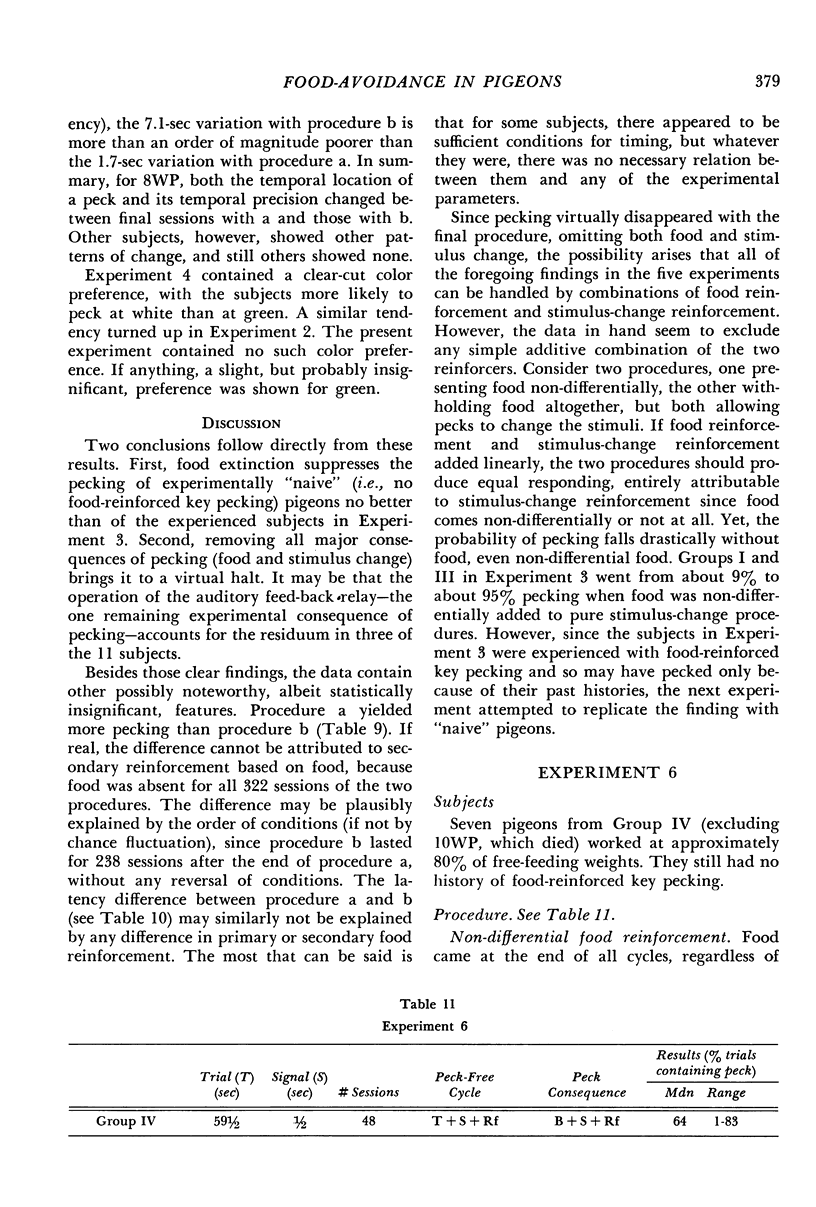
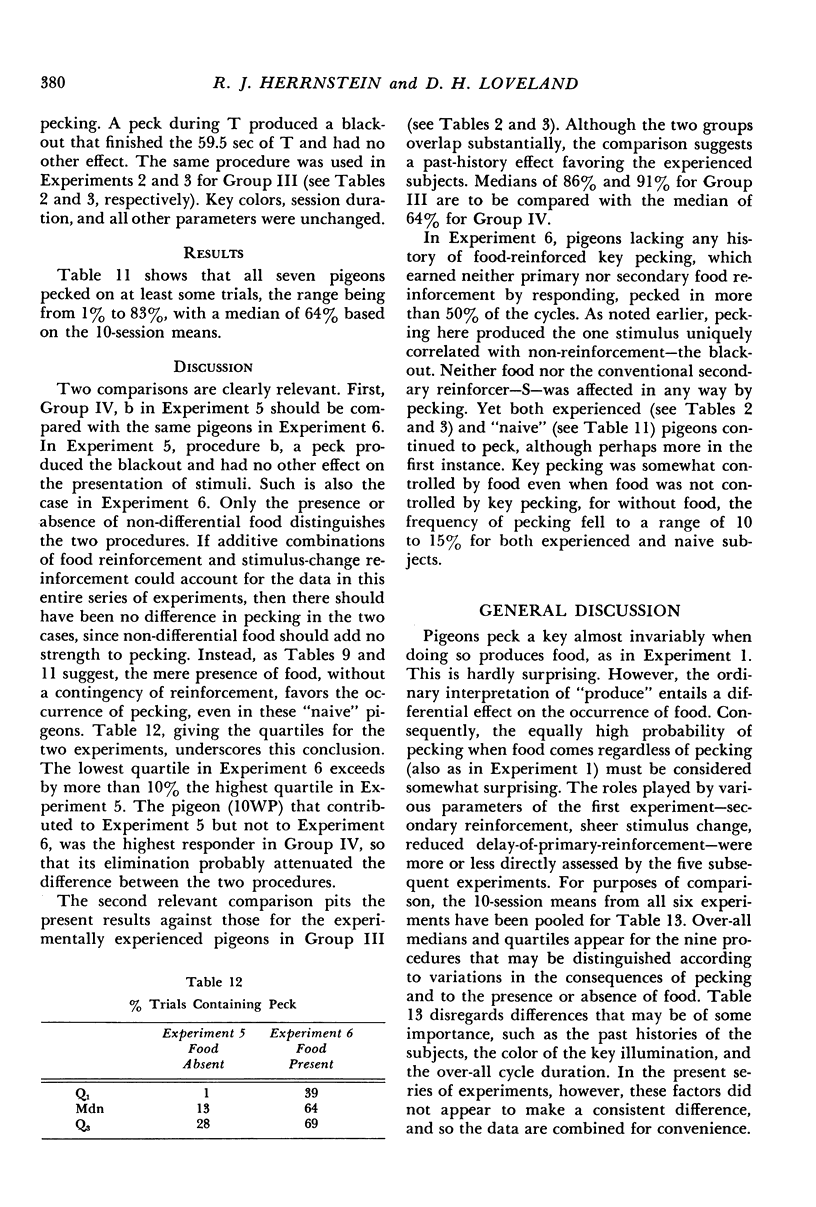
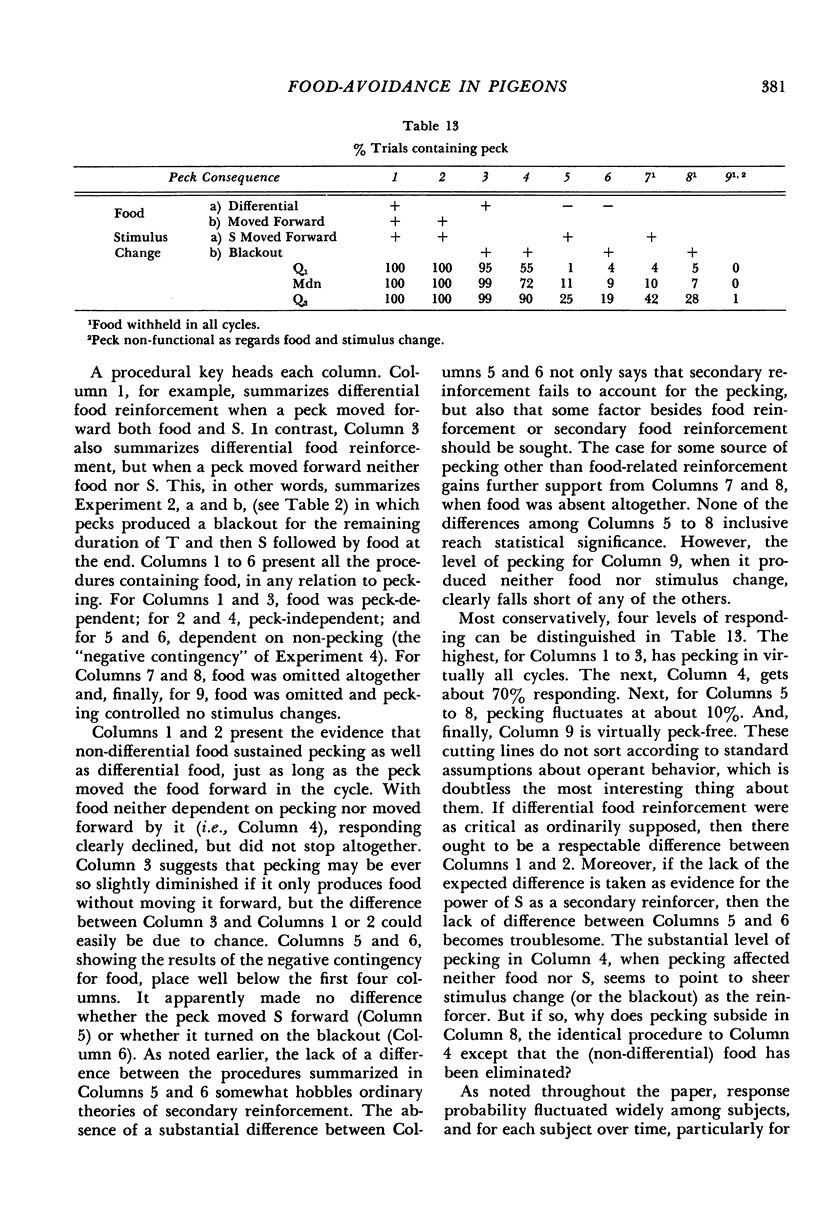
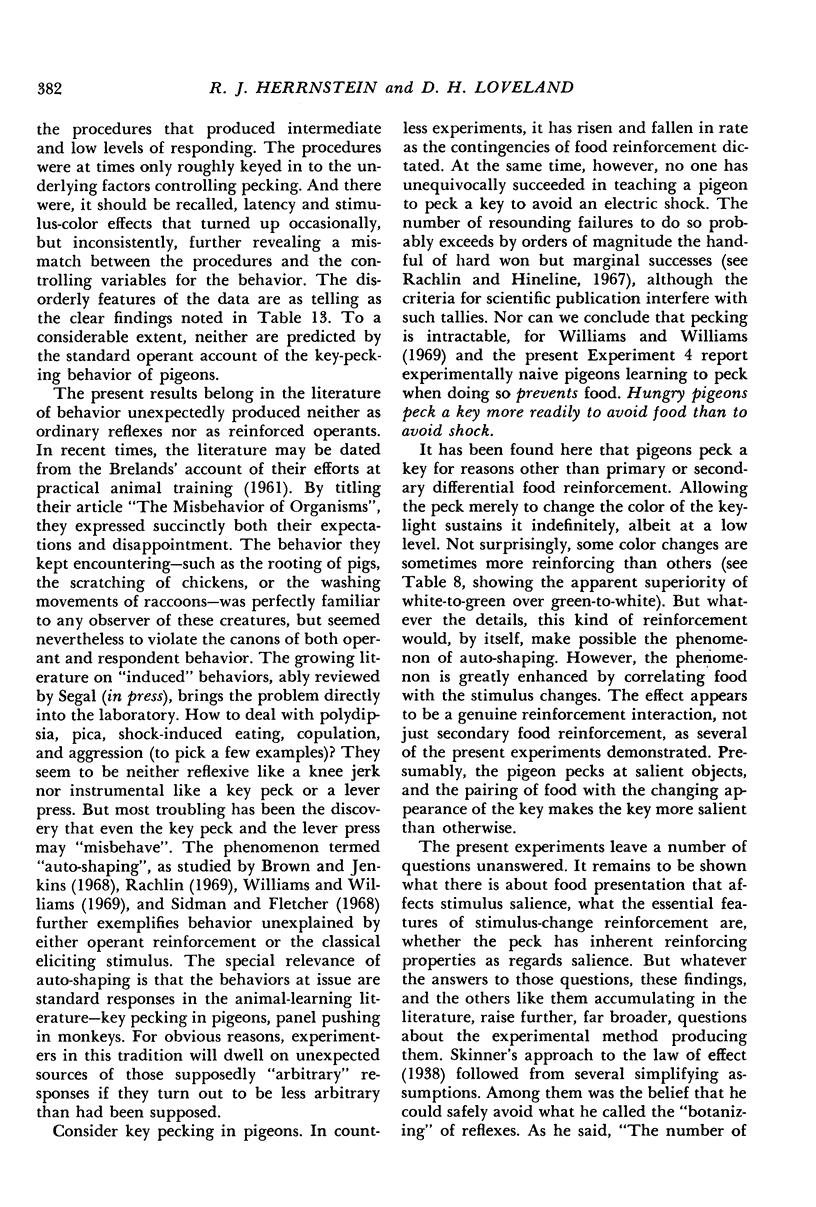
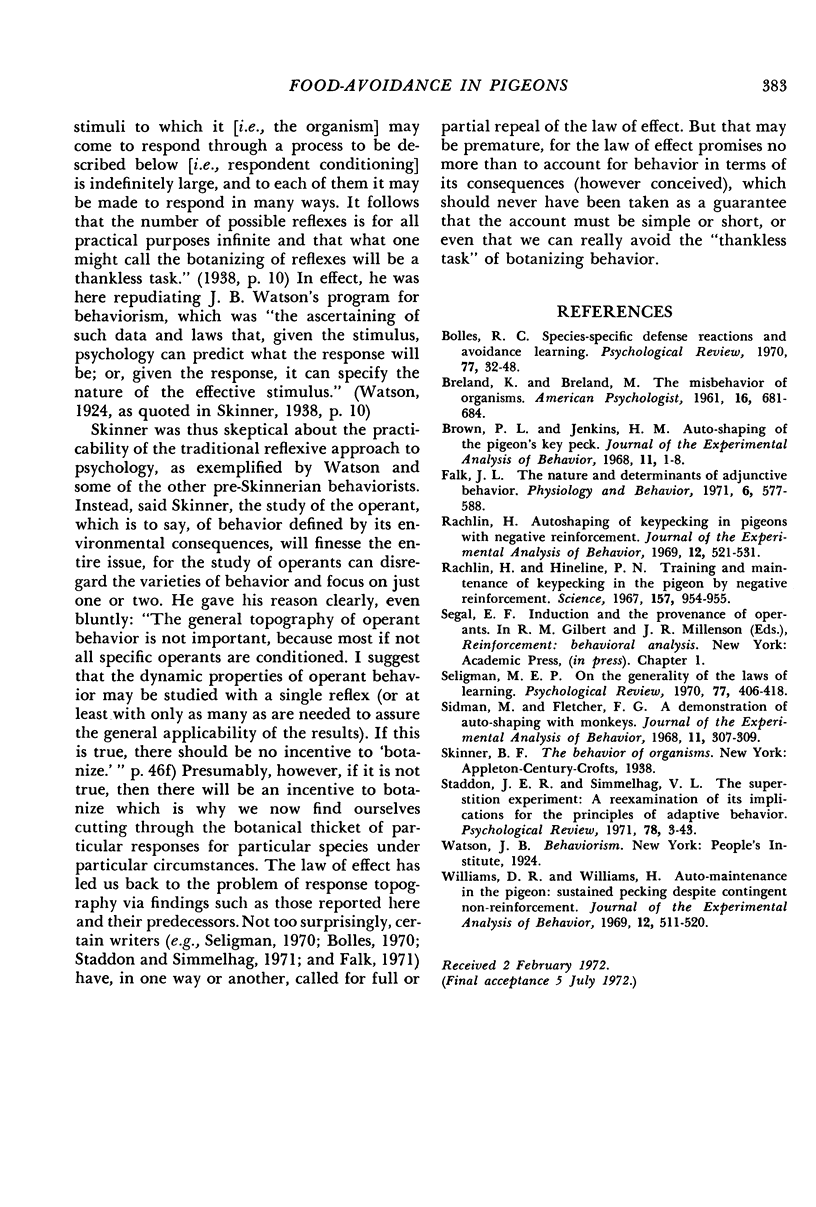
Selected References
These references are in PubMed. This may not be the complete list of references from this article.
- Brown P. L., Jenkins H. M. Auto-shaping of the pigeon's key-peck. J Exp Anal Behav. 1968 Jan;11(1):1–8. doi: 10.1901/jeab.1968.11-1. [DOI] [PMC free article] [PubMed] [Google Scholar]
- Falk J. L. The nature and determinants of adjunctive behavior. Physiol Behav. 1971 May;6(5):577–588. doi: 10.1016/0031-9384(71)90209-5. [DOI] [PubMed] [Google Scholar]
- Rachlin H. Autoshaping of key pecking in pigeons with negative reinforcement. J Exp Anal Behav. 1969 Jul;12(4):521–531. doi: 10.1901/jeab.1969.12-521. [DOI] [PMC free article] [PubMed] [Google Scholar]
- Rachlin H., Hineline P. N. Training and maintenance of keypecking in the pigeon by negative reinforcement. Science. 1967 Aug 25;157(3791):954–955. doi: 10.1126/science.157.3791.954. [DOI] [PubMed] [Google Scholar]
- Sidman M., Fletcher F. G. A demonstration of auto-shaping with monkeys. J Exp Anal Behav. 1968 May;11(3):307–309. doi: 10.1901/jeab.1968.11-307. [DOI] [PMC free article] [PubMed] [Google Scholar]
- Williams D. R., Williams H. Auto-maintenance in the pigeon: sustained pecking despite contingent non-reinforcement. J Exp Anal Behav. 1969 Jul;12(4):511–520. doi: 10.1901/jeab.1969.12-511. [DOI] [PMC free article] [PubMed] [Google Scholar]


